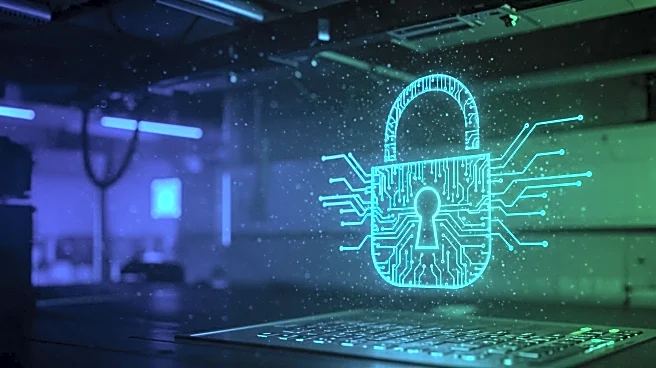What is the story about?
What's Happening?
Chris Sestito, CEO of HiddenLayer Technologies, recently discussed the evolving landscape of AI security in an episode of Safe Mode. Sestito highlighted the shortcomings of current protection strategies against AI-specific threats, emphasizing the need for enterprises to rethink their approach to AI asset protection. He provided real-world examples where traditional security measures failed, underscoring the unique vulnerabilities that conventional cybersecurity tools struggle to address. The conversation also touched on the tension between rapid AI innovation and existing regulatory frameworks. Sestito shared his perspective on smarter, more adaptive AI regulation and how policymakers can balance innovation with robust security protections. Additionally, the discussion included insights into insider threats in AI-driven workplaces and recommendations for government regulators crafting new AI security laws.
Why It's Important?
The insights shared by Chris Sestito are crucial as they highlight the growing challenges in AI security that enterprises face. As AI technology continues to advance, traditional cybersecurity measures are proving inadequate, necessitating a shift in how organizations protect their AI assets. This has significant implications for industries relying heavily on AI, as they must adapt to new security paradigms to safeguard their operations. Furthermore, the discussion on regulatory frameworks is vital for policymakers who need to ensure that innovation does not outpace security measures. The balance between fostering AI advancements and implementing effective security regulations is critical to prevent potential vulnerabilities and threats that could impact businesses and national security.
What's Next?
Enterprises are expected to continue evolving their AI security strategies to address the unique challenges posed by AI-specific threats. This may involve adopting more sophisticated security tools and frameworks tailored to AI environments. Policymakers are likely to consider Sestito's recommendations as they craft new AI security laws, aiming to strike a balance between innovation and protection. The ongoing dialogue between industry leaders and regulators will be essential in shaping effective policies that safeguard AI technologies while promoting their growth. Additionally, organizations may increase their focus on mitigating insider threats within AI-driven workplaces, ensuring comprehensive security measures are in place.
Beyond the Headlines
The discussion on AI security also raises ethical considerations regarding the use and protection of AI technologies. As AI becomes more integrated into various sectors, questions about privacy, data protection, and ethical use of AI arise. Organizations must navigate these issues while implementing security measures, ensuring that AI advancements do not compromise ethical standards. Furthermore, the conversation highlights the potential long-term shifts in cybersecurity practices, as AI continues to redefine the landscape. This could lead to a broader transformation in how security is approached across industries, emphasizing the need for continuous adaptation and innovation.
AI Generated Content
Do you find this article useful?











